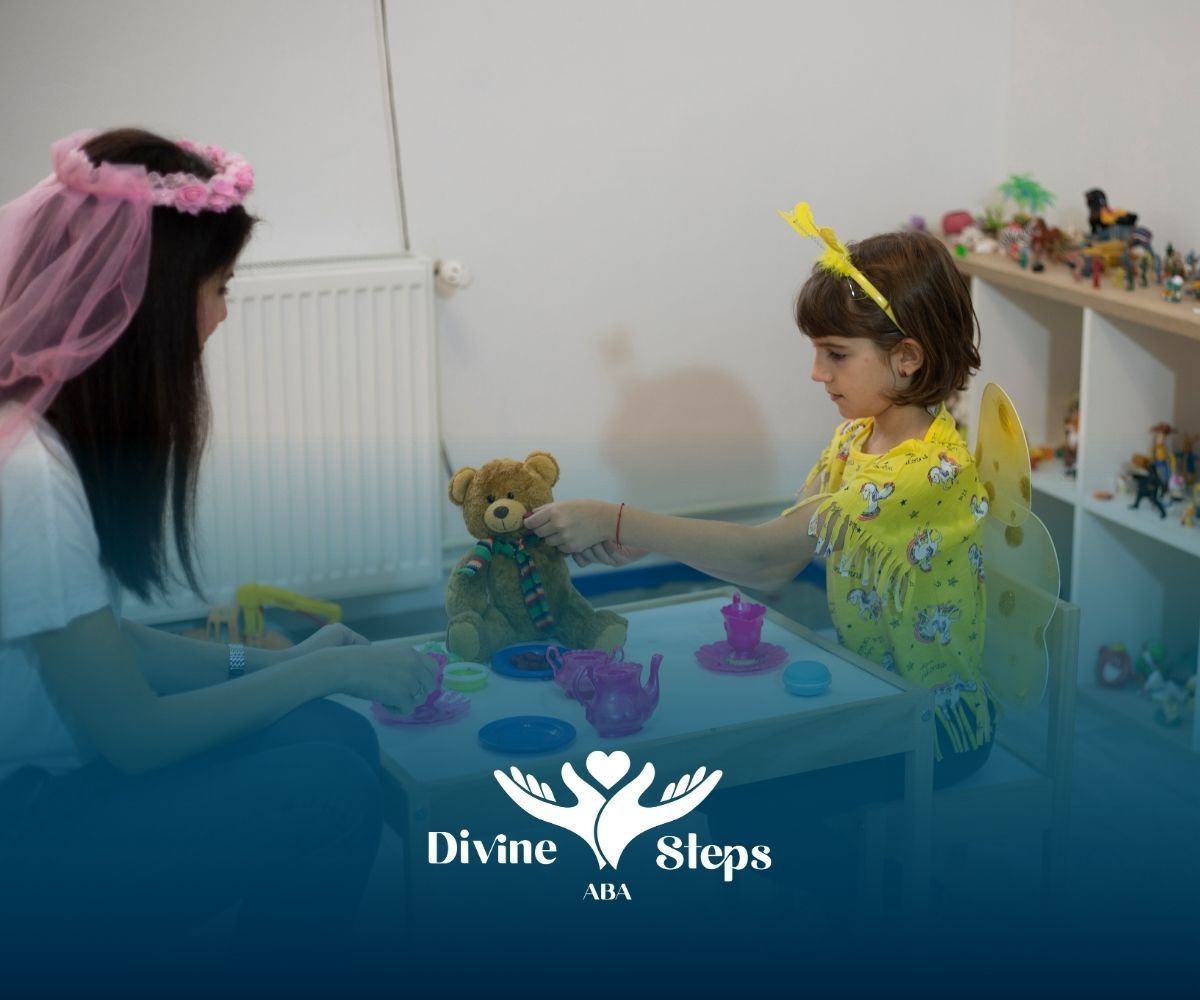Website by CWS
Must-Have Toys for Children with Autism and Sensory Needs
Helping a child on the autism spectrum thrive means understanding how they play, learn, and process the world around them. The right toy can be more than just a way to pass the time—it can be a key to unlocking communication, motor skills, and a sense of calm.
I remember working with a five-year-old boy who struggled with transitions and communication. His parents felt overwhelmed, unsure which toys would help him feel regulated.
We introduced a sensory swing and interactive storybooks during his in-home ABA therapy sessions—and the change was incredible. Over time, he started initiating play and even requesting the book he liked best. It was a reminder that the right toy, at the right time, can truly empower a child.
This guide explores 10 engaging toys that help children with autism grow, learn, and feel secure. From sensory mats to interactive books, these toys foster motor skills, social interaction, and emotional regulation—while keeping playtime fun and purposeful.
1. Sensory Mats for Tactile Exploration
Why They're Helpful
Sensory mats offer a safe and engaging way for kids to explore different textures with their hands and feet. These mats often include a variety of surfaces—soft, bumpy, ridged—that provide the tactile input many autistic children seek.
What They Support
- Balance and movement: Encourage gross motor skills as children crawl or walk on the mat.
- Sensory discovery: Promote tactile awareness in a fun, low-pressure setting.
- Home and therapy use: Widely recommended by occupational therapists for sensory routines.
Tip for Use
Choose mats with bright colors and varied textures to maintain interest. Incorporate them into daily routines for best results.
2. Fidget Spinners and Fidget Cubes
Why They're Helpful
These small tools provide steady, repetitive motion, which can be calming and help with focus—especially during school or therapy.
What They Support
- Improved attention: Great for helping children concentrate on tasks.
- Self-regulation: Offer a way to manage restlessness or anxiety.
- Fine motor skills: Engaging buttons, gears, and textures build hand strength and dexterity.
Tip for Use
Offer different fidget options and let the child choose what feels most soothing.
3. Weighted Plush Animals
Why They're Helpful
Weighted plush toys offer comfort through deep pressure, which many autistic children with sensory needs find calming. The gentle weight helps ground the body and promote a sense of safety.
What They Support
- Emotional support: Useful during transitions or bedtime routines.
- Sensory input: Combines soft texture with calming weight.
- Focus and calm: Helps reduce anxiety without overstimulating.
Tip for Use
Use during quiet time, car rides, or to help a child settle down before sleep.
4. Chewable Jewelry (Chewelry)
Why They're Helpful
Many autistic children chew to cope with stress or seek oral stimulation. Chewelry is safe, wearable, and helps meet those needs without damaging clothing or other objects.
What They Support
- Oral sensory input: Provides calming relief.
- Motor development: Can support speech and coordination when used properly.
- Imaginative play: Kids can use chewelry during pretend play, adding social learning to sensory benefits.
Tip for Use
Choose chewable accessories in favorite colors or shapes to make them more appealing.
5. Building Blocks and Construction Sets
Why They're Helpful
Classic toys for autistic children like blocks foster creativity, hand-eye coordination, and structured play. They're also great for cooperative play.
Types and Benefits
- Classic blocks: Encourage stacking, sorting, and building imagination.
- Magnetic tiles: Help reduce frustration and make it easier to build.
- Themed kits: Great for storytelling, planning, and problem-solving.
Tip for Use
Start with simple tasks and let children build up to more complex creations at their own pace.
6. Cause-and-Effect Musical Toys
Why They're Helpful
Toys that play music or light up when buttons are pressed teach cause-and-effect while keeping children engaged with sounds and visuals.
What They Support
- Auditory development: Useful for kids who enjoy sound-based learning.
- Language growth: Helps children associate sounds with actions or words.
- Interactive play: Encourages back-and-forth responses with adults or peers.
Tip for Use
Use these toys during one-on-one playtime to reinforce communication and listening.
7. Liquid Motion Bubbles and Timers
Why They're Helpful
These calming toys for autistic kids create a visual rhythm that children can focus on during stressful moments. Watching bubbles slowly drift helps quiet the mind.
What They Support
- Relaxation: Helps reduce overwhelm in overstimulating environments.
- Focus: Gives the brain a gentle, predictable input.
- Emotional control: Can be part of a sensory “calm-down” toolkit.
Tip for Use
Keep a motion toy in your child’s backpack or therapy bag for use on the go.
8. Interactive Storybooks
Why They're Helpful
Books with textures, sound buttons, or puzzles invite hands-on interaction while building language skills.
What They Support
- Language and literacy: Boost word recognition and storytelling.
- Social interaction: Great for shared reading and communication.
- Sensory exploration: Adds texture and sound to the reading experience.
Tip for Use
Choose books that match your child’s interests—animals, vehicles, or favorite characters.
9. Light-Up Toys for Visual Stimulation
Why They're Helpful
Bright, blinking lights can capture a child’s attention while offering safe visual stimulation. These toys are especially appealing to kids who enjoy looking at patterns and colors.
What They Support
- Visual focus: Helps some children tune in and engage more fully.
- Cause-and-effect learning: Reinforces action and response.
- Portable fun: Many are small enough to take along in a sensory kit.
Tip for Use
Use these toys in short sessions, and always monitor for signs of overstimulation.
10. Sensory Swings and Pod Chairs
Why They're Helpful
Swings and pod chairs offer gentle rocking or spinning, which can be deeply soothing. These movement-based tools help children feel grounded.
What They Support
- Vestibular input: Supports balance and body awareness.
- Calming pressure: Pod chairs gently hug the body.
- Flexible use: Great for home, therapy, or classroom spaces.
Tip for Use
Create a quiet corner with a swing or pod chair where your child can retreat when feeling overwhelmed.
Conclusion
Supporting a child with autism means meeting them where they are—and that includes how they play. The toys in this guide aren’t just fun; they’re powerful tools for building motor skills, encouraging language, and easing anxiety. Whether it's a weighted plush or a sensory swing, the right toy can open doors to growth, connection, and joy.
At Divine Steps ABA, we believe that every child deserves the tools to thrive—and that includes purposeful play.
Our ABA therapy programs in Maryland are designed to meet your child exactly where they are, using strategies that work both in the clinic and at home. Let us help you build a plan that supports your child’s communication, social, and sensory needs.
Book a free consultation with one of our compassionate therapists today. Let's take the next step together.
FAQs
1. What types of toys are best for children with autism?
Toys that support sensory regulation, fine and gross motor skills, communication, and emotional comfort are most effective for children on the autism spectrum. These include sensory mats, weighted plush toys, chewable jewelry, fidget items, and interactive books. The best toys align with a child’s individual sensory preferences and developmental stage.
2. How do sensory toys help autistic children?
Sensory toys provide targeted input—like texture, light, sound, or movement—that can help regulate a child’s nervous system. They aid in calming overstimulation, promoting focus, and offering predictable, comforting experiences that support learning and communication.
3. Can these toys be used during ABA therapy sessions?
Absolutely. Many ABA therapists use sensory and educational toys to reinforce skills like following directions, communication, turn-taking, and emotional regulation. Tools like fidget toys, interactive books, and swings can be incorporated into structured programs or free-play time to support therapy goals.
Sources:
- https://www.healthline.com/health/parenting/toys-for-kids-with-autism
- https://www.naeyc.org/resources/topics/play/specific-toys-play
- https://pmc.ncbi.nlm.nih.gov/articles/PMC10913295/
- https://www.autismspeaks.org/blog/ten-toys-and-games-autistic-toddlers-and-children
- https://www.autismspeaks.org/blog/what-are-sensory-toys
- https://autism.org/choosing-toys-for-a-child-with-autism/




